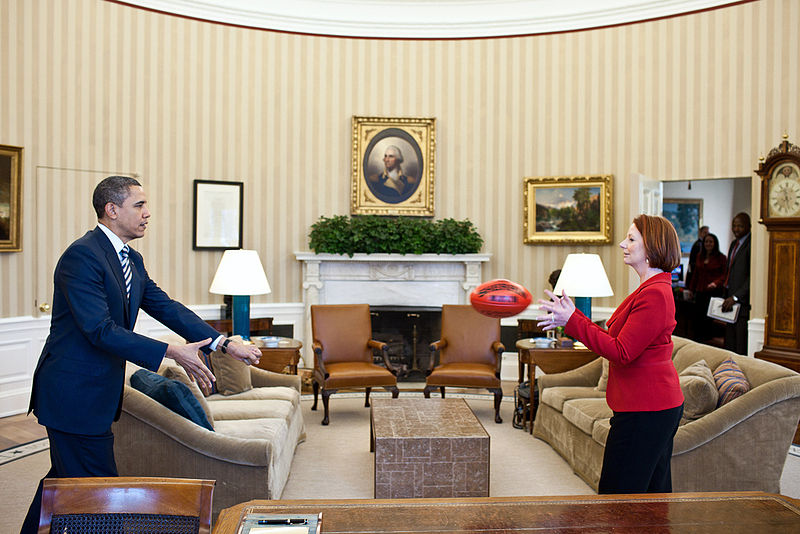 Defence White Paper 2013 articulates what we’ve known for some time is an intent to pivot the ADF back to closer engagement in our region. The document makes a strong statement of intent to deepen relations with Indonesia and reinvest in defence cooperation with Papua New Guinea. It also points to a rapidly growing strategic relationship with Japan and to the potential for closer cooperation with Tokyo on industry matters. In terms of regional engagement, these three relationships have shown, in different ways, the fastest growth in defence cooperation.
Defence White Paper 2013 articulates what we’ve known for some time is an intent to pivot the ADF back to closer engagement in our region. The document makes a strong statement of intent to deepen relations with Indonesia and reinvest in defence cooperation with Papua New Guinea. It also points to a rapidly growing strategic relationship with Japan and to the potential for closer cooperation with Tokyo on industry matters. In terms of regional engagement, these three relationships have shown, in different ways, the fastest growth in defence cooperation.
It’s very welcome that the White Paper takes a broad approach to thinking about Australia’s strategic interests. Don’t be fooled by the language stressing continuity between this document on the one hand and the Asian Century White Paper and National Security Strategy on the other. Of these three, the Defence White Paper reflects by far the most sophisticated approach. More needs to be done to think through the idea of an ‘Indo-Pacific strategic arc’, but that’s a far more realistic way to think about our interests than the Asian Century White Paper’s approach, which is to emphasise a narrow set of relationships with a limited number of countries. By contrast, the Defence White Paper has sensible things to say about Australia’s strategic interests in Africa and the Middle East, and on the importance of strategic engagement with countries in Europe, Latin America and elsewhere.
Unlike the National Security Strategy, the White Paper has a more hard-edged view of risks to regional security which is, frankly, more grown up in its approach. It’s pleasing to see the statement finally tackling (and dismissing) the tired shibboleth of having to choose between China and the US. Neither wants us to choose, nor is it in our strategic interests to do so.
The US alliance relationship receives a more substantial treatment than it did in the Asian Century White Paper. Judgements about the longevity and value of America’s strategic role in the Asia-Pacific have clearly been examined and the right conclusion reached; that the alliance remains central to Australian interests. It’s a great pity that the White Paper didn’t take the opportunity to speed up cooperation with the US on Marine Corps and Air Force deployments—a task for another day perhaps. But there are positive statements about opportunities for new cooperation in areas of space, what I think is a new term in ‘cyber power’ and on ballistic missile defence.
On force posture matters, the White Paper reprises much of the ground covered in the Force Posture review study of 2012. It’s a major positive that no decisions have been taken to permanently deploy ADF assets to the north and north west—something of a pet-theme for WA politicians—but the decision to undertake facilities improvements on the Cocos Islands, Darwin and RAAF base Tindal are to be welcomed. More concerning is the shelving of thinking about a further Navy base on the east coast. That will surely have to be revisited in the medium term.
It’s very welcome that the White Paper takes seriously the need to plan for Defence engagement in the region. The 2009 White paper put too much emphasis on force planning for 2030. Of course long-term force structuring decisions are essential, but so too is the need for Australia to seek to shape and influence its strategic environment in 2013, 2014 and every year up to that point. Early and sustained Australian involvement in building trusting relations with our friends and neighbours is a vital part of securing our long term strategic interests.
All told, the strategic positioning of the ADF in the White Paper represents a balanced and sensible approach. Much of this regional engagement activity is low cost but high value and represents the right focus for Defence. The White Paper’s strategic assessment is by far the most sensible statement of the Government’s approach to regional security that we’ve seen. The budget picture however, remains poor for Defence, notwithstanding a small injection of funding to pay for the Growler acquisition. As I wrote recently, this is a White Paper fitted for but not with money. A future government—of any political stripe—will have to revisit that situation. The choice remains the same: we’ll have to spend more or trim planned acquisitions. The clarity of this White paper’s strategic assessment makes that need all the more stark.
Peter Jennings is executive director of the Australian Strategic Policy Institute. Image courtesy of The White House.

